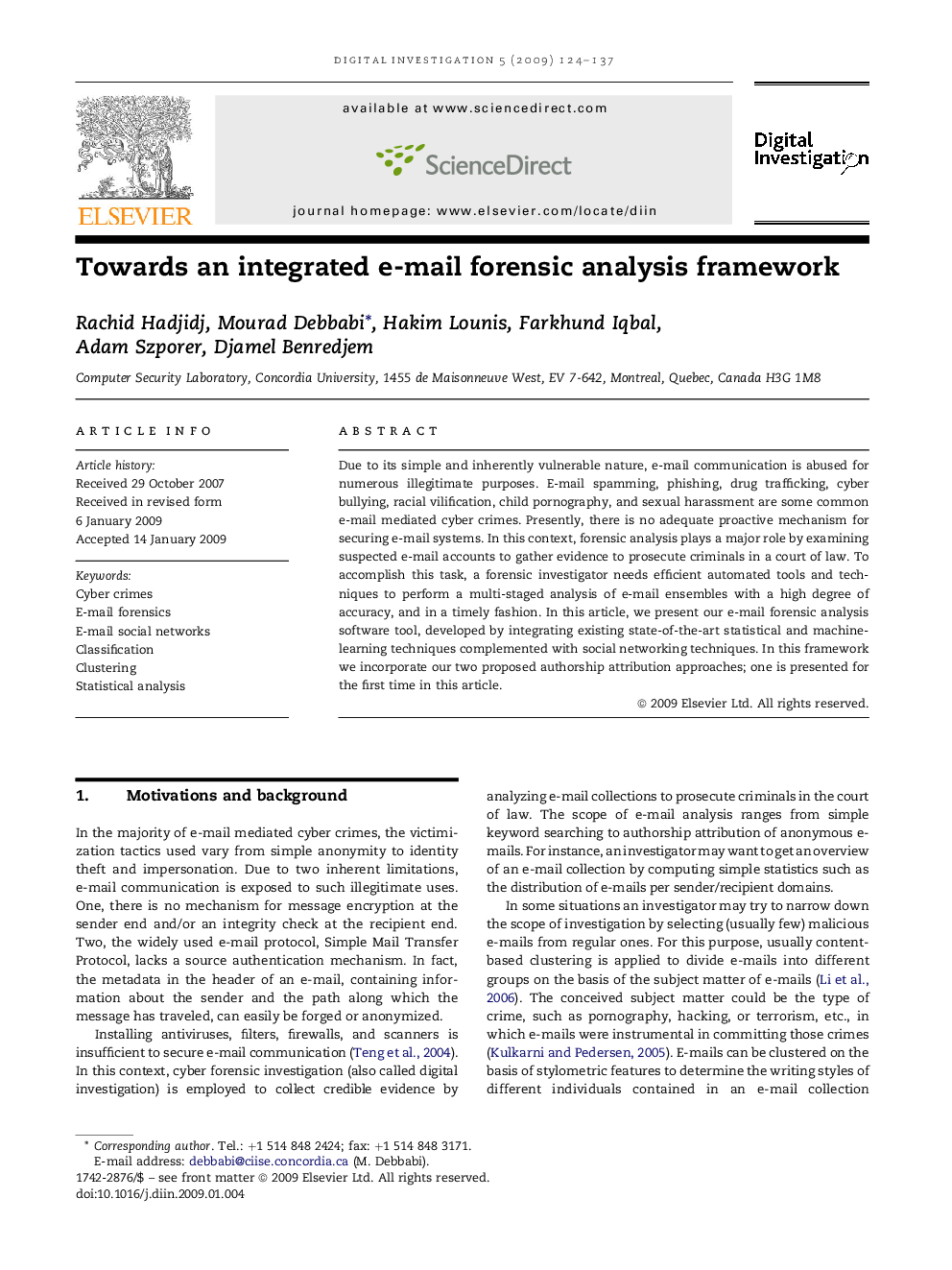| Article ID | Journal | Published Year | Pages | File Type |
|---|---|---|---|---|
| 458008 | Digital Investigation | 2009 | 14 Pages |
Due to its simple and inherently vulnerable nature, e-mail communication is abused for numerous illegitimate purposes. E-mail spamming, phishing, drug trafficking, cyber bullying, racial vilification, child pornography, and sexual harassment are some common e-mail mediated cyber crimes. Presently, there is no adequate proactive mechanism for securing e-mail systems. In this context, forensic analysis plays a major role by examining suspected e-mail accounts to gather evidence to prosecute criminals in a court of law. To accomplish this task, a forensic investigator needs efficient automated tools and techniques to perform a multi-staged analysis of e-mail ensembles with a high degree of accuracy, and in a timely fashion. In this article, we present our e-mail forensic analysis software tool, developed by integrating existing state-of-the-art statistical and machine-learning techniques complemented with social networking techniques. In this framework we incorporate our two proposed authorship attribution approaches; one is presented for the first time in this article.
